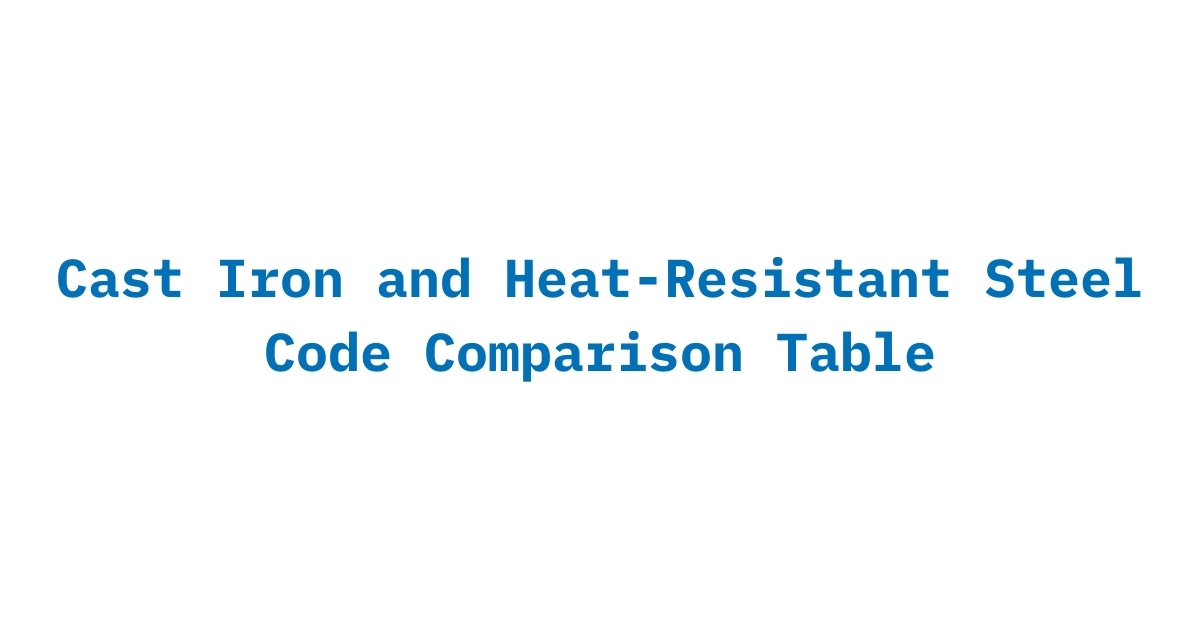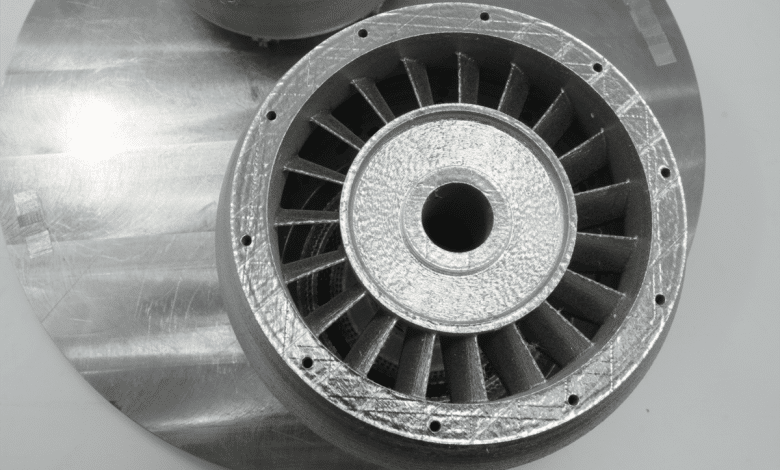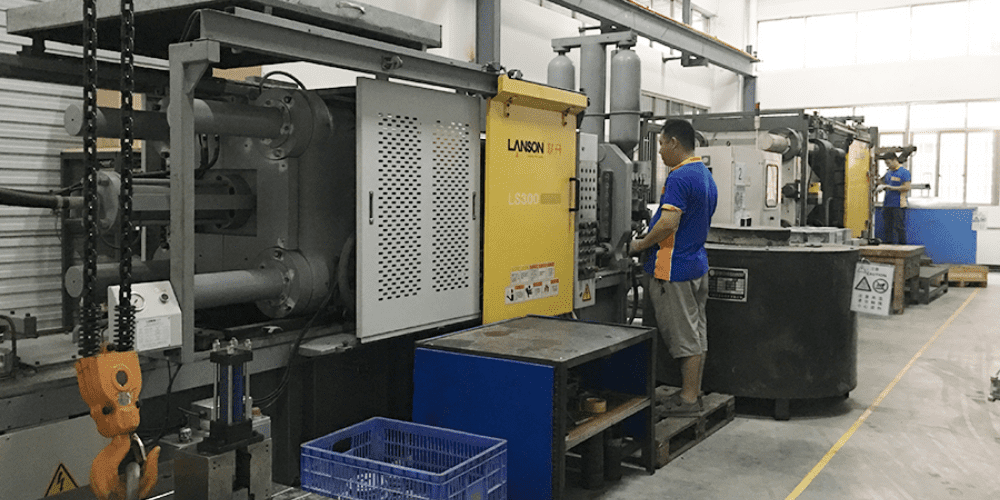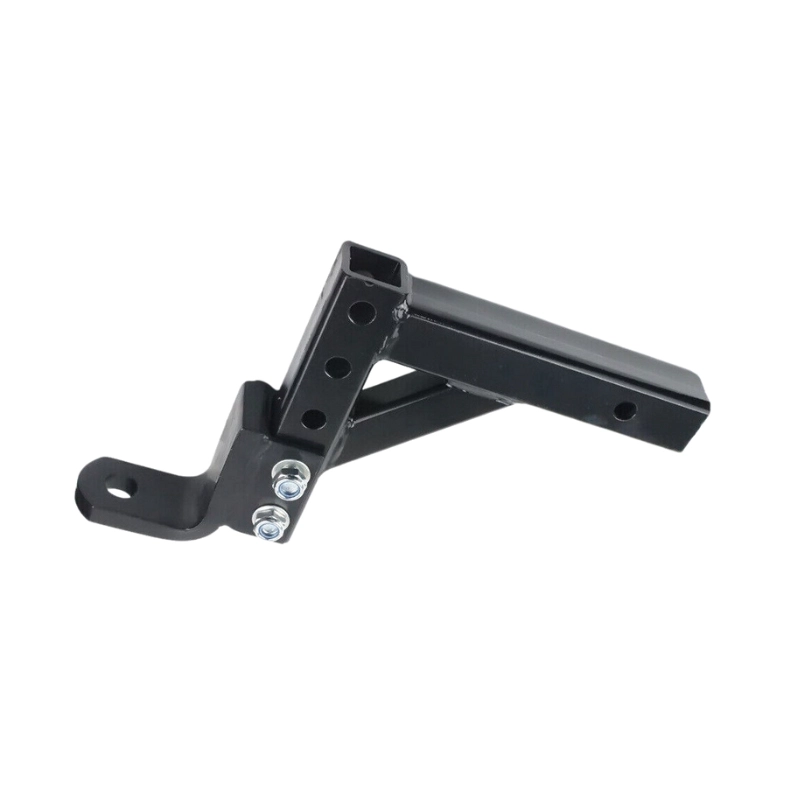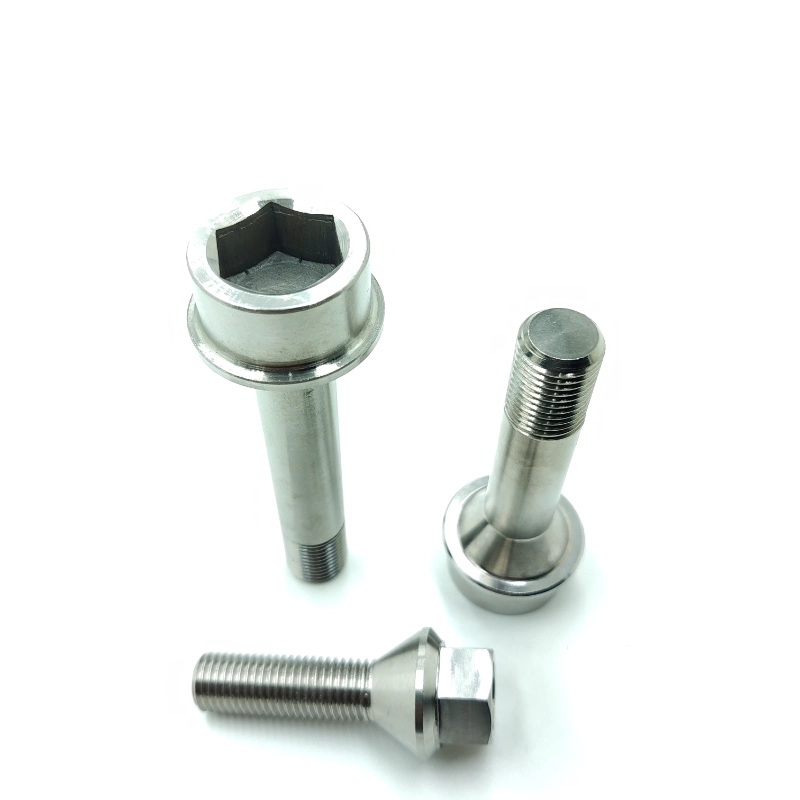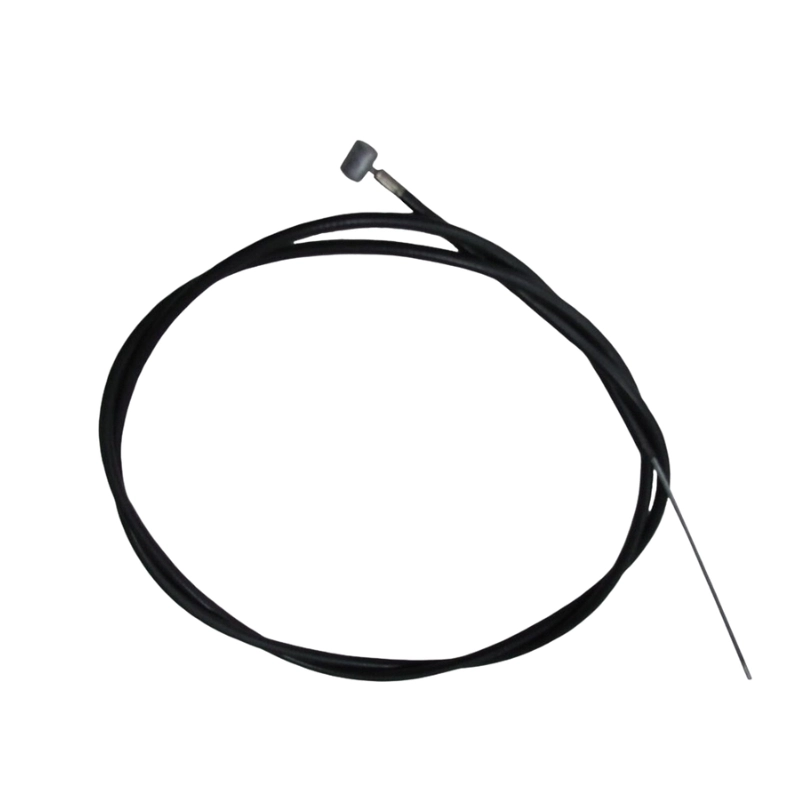Forging is a method used to shape metals by applying compressive force, which enhances the metal’s strength, refines its grain structure, and improves fatigue resistance to produce parts that are stronger than those cast or machined. This is ideal for industries that need strong and reliable parts.
Classification of Forging by Tooling
Открытая ковка
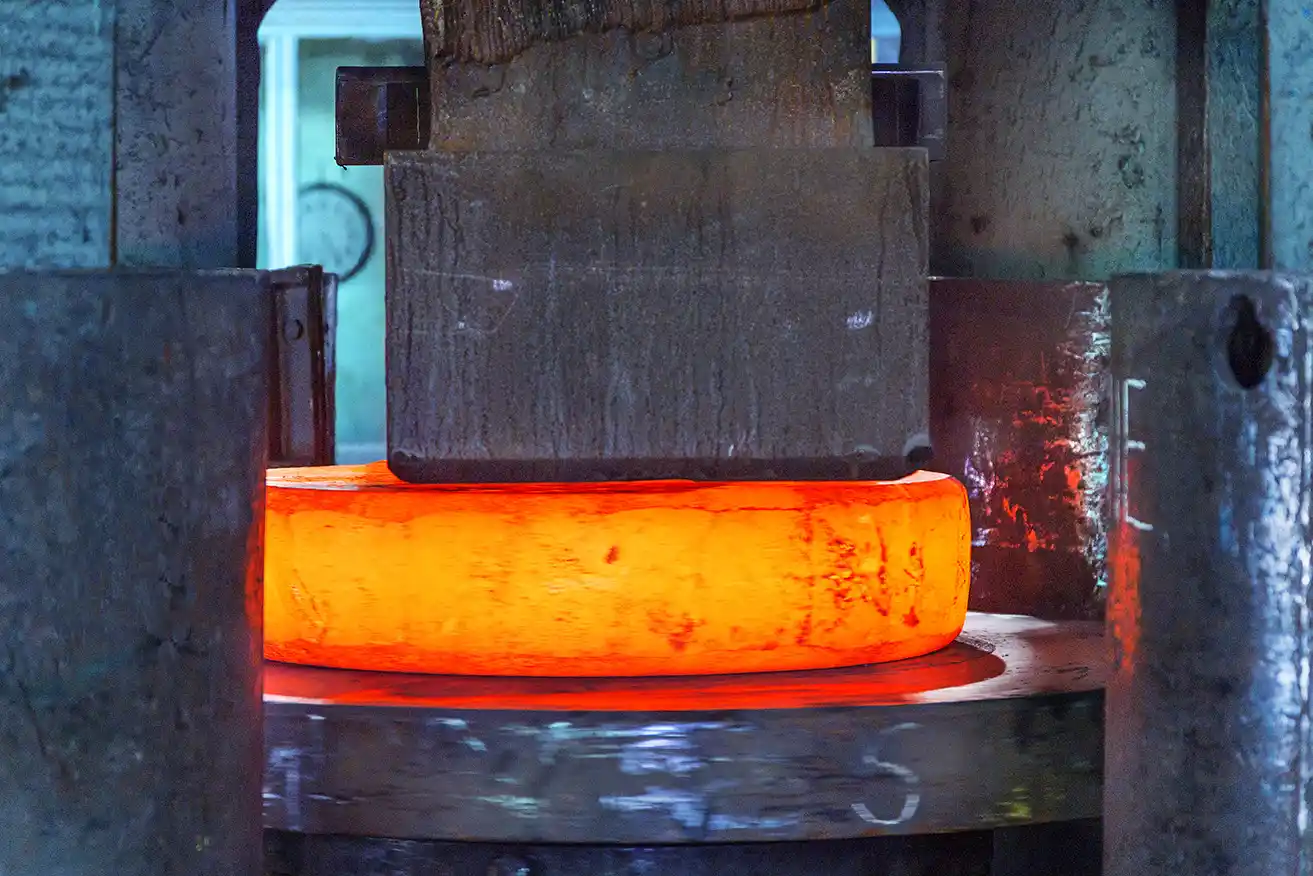

Open-die forging, also known as free-forging, shapes hot metal between flat dies or a hammer and an anvil. There are no side-walls or full molds used, which allows the metal to flow relatively freely as it is deformed from different sides.
Преимущества
- Continuous Grain Flow: The grain structure aligns with the part’s shape, improving strength and resistance to failure.
- Less Waste: Since there is no flash, this saves on raw material costs, especially with expensive alloys.
- Large Parts: It is suitable for forging oversized or custom shapes that don’t fit in molds.
Open-die forging is typically used for large shafts for power generation, cylinders in hydraulic presses, and custom tools and arts for blacksmithing work.
Closed-Die (Impression-Die) Forging
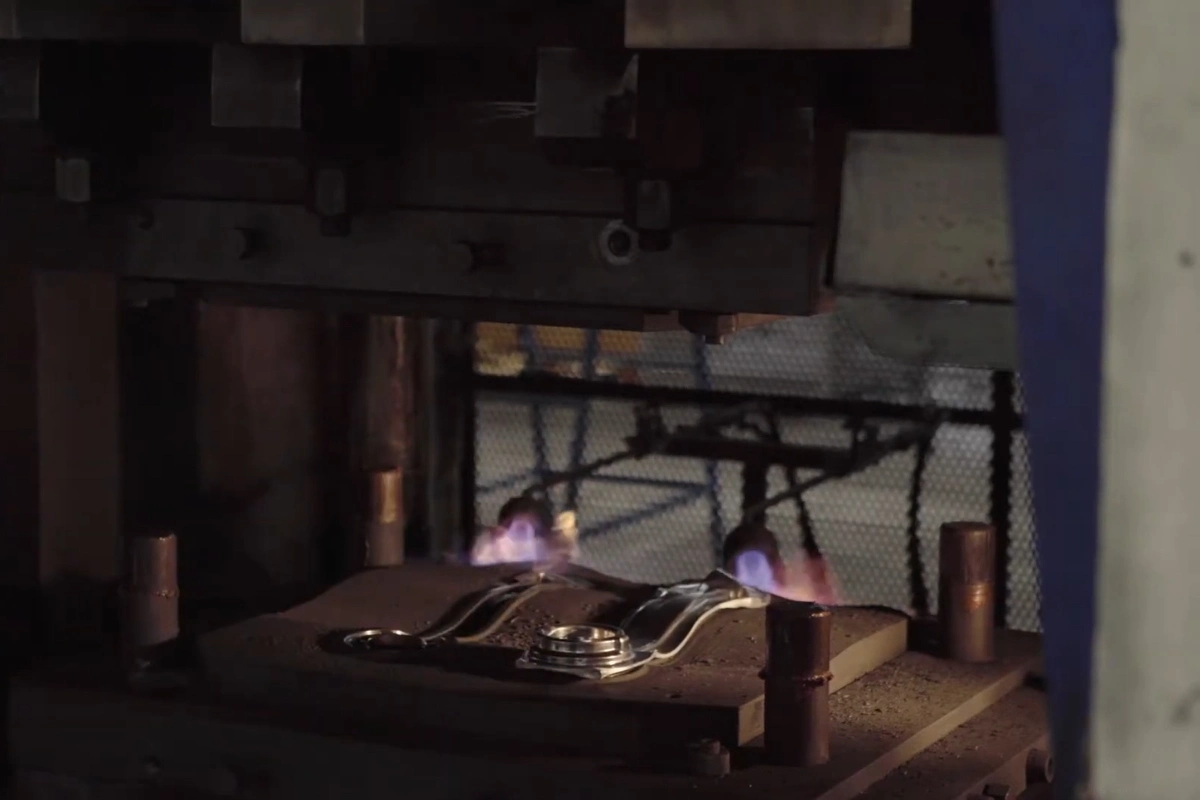

This is a process where a heated billet is placed between shaped dies that contain the exact outline of the part. The metal fills the die cavity under pressure, and extra material flows out as flash, which is later trimmed off.
Ресурсы: Close Die Forging Vs. Open Die Forging
This process often involves three steps:
- Edging: This step distributes the metal within the billet to prepare it for the mold.
- Blocking: Here, the metal is formed into a shape that closely resembles the final part.
- Final Impression: Presses the metal into the final shape with close tolerances.
Преимущества
- Near-net Shapes: This means the forged part comes out very close to its final size and form.
- Высокая точность: The shaped dies control every detail, so parts come out with tight tolerances.
- Повторяемость: Once the dies are set, each forged part comes out nearly identical. Whether you’re making 100 or 10,000 units, the consistency stays the same.
- High Strength: This makes the metal tougher and more resistant to cracks and impact.
Rolled-Ring Forging


This process starts with a round billet, and then a hole is punched in the center, turning it into a thick ring. The ring is then heated and rolled between tools that spread it out. The metal stretches outward while the ring gets thinner and wider. The grain also flows in a circular path, making the ring strong in all directions.
This process is used to make parts, such as bearings, gears, wind turbine flanges, and jet components.
Преимущества
- There is consistent grain flow, which enhances fatigue resistance.
- It provides a near-continuous structure, which reduces the need for welding.
- Since the ring is forged from a single piece of metal with no seams or welds, the part holds together better under stress.
Forging by Temperature Category
Горячая ковка
Hot forging involves shaping the metal above its recrystallization point, which is typically between 0.3 and 0.5 times its absolute melting temperature (Tm). With this, the metal is much easier to shape, especially for metals that are hard to work with when cold.
Преимущества
- Thanks to high temperatures, the metal’s resistance to deformation is significantly lower, making it easier to shape complex or large parts.
- The heat and pressure can help close small internal cracks, pores, or voids in the metal, which improves the part’s overall structure and strength.
- Because hot forging makes the metal easier to deform, it’s ideal for forging very large pieces or shapes with thick sections.
Недостатки
- When metal is heated in air, it reacts with oxygen and forms a layer of scale on the surface, which can leave the part looking rough.
- Besides making the surface look rough, scale can reduce part accuracy and also lead to slight material loss during the process.
Теплая ковка
This process is done at intermediate temperatures between hot and cold forging. Warm forging offers a smoother finish than hot forging, but it requires more force, and it also wears out tools faster. Temperature control is also more critical.
Warm forging allows for better control of size and shape than hot forging. While it may not be as exact as cold forging, it offers enough precision for many parts.
Холодная ковка
Cold forging uses strong pressure to shape metal at room temperature or below, which is significantly below the metal’s recrystallization temperature. Common techniques used in this process include:
- Coining: Presses letters, logos, or other fine details into the surface of the metal.
- Cold Heading: Forms heads on nails, bolts, and pins without cutting or welding.
- Drawing: Pulls the metal through a die to reduce its cross-section and produce long wires or tubes.
- Экструзия: Forces metal through a shaped die orifice under high pressure to create rods, bars, or tubes.
Преимущества
- This process offers a smooth and excellent surface finish.
- It provides excellent dimensional accuracy and surface finish, although springback must be accounted for in die design.
- Since there is no heating step, it saves a lot of energy.
Specialised Forging Techniques
Swaging
Swaging is a hammering or squeezing method that employs radial or rotary dies that rapidly impact the workpiece, either while it rotates or moves forward. Swaging can be hot or cold, depending on the metal and the part. It’s often used to taper, reduce, or expand the ends of rods or tubes.
It’s mostly used in:
- Bullet casings
- Metal pen tubes
- Shaft or spindle production
Press Forging
Press forging uses steady, slow pressure to shape metal instead of quick hammer hits. It can be done hot, warm, or cold. The slow motion pushes metal deep into the die, giving a more complete fill and smoother outer surface.
Because it presses rather than strikes, press forging imposes lower impact loads on the dies. This extends tool life and reduces damage to the machine.
Benefits of Press Forging
- High precision: The steady force allows metal to fill the die completely. This leads to better control over part shape and size.
- Stronger grain flow: Continuous pressure improves grain alignment, which strengthens the part.
- Smooth surface finish: Press forging causes less turbulence in the metal. The result is a cleaner outer surface with fewer defects.
Cogging
Cogging (also called drawing out) is an incremental process used to reduce a large metal block (ingot or bloom) into a longer, thinner billet or bar. A flat die hammers sections of the workpiece as it’s systematically moved back and forth. The cross-section gets smaller and the grain structure more uniform after each pass.
Cogging doesn’t create the final part. Instead, it prepares the metal for other forging methods, like open-die or closed-die forging.
Key Roles
- Billet Preformation: By reducing the billet gradually, cogging helps create a more uniform starting block. This gives you better control over the final part and saves material. It also helps break up the coarse as-cast structure.
- Grain Refinement: Cogging breaks up coarse grains and closes voids or internal flaws. This results in parts that are tougher, last longer, and resist cracking better.
Induction Heating (for Forging Billets)
Induction heating uses electromagnetic coils to heat metal without fire or contact. The coils create a magnetic field, which rapidly heats the metal primarily from the surface inward due to the skin effect. This technique is often used before forging steps to bring the billet to the right temperature quickly and cleanly.
Преимущества
- Rapid Heating: Targeted heating means the forge shop can heat only the part of the workpiece that needs shaping. Billets can reach forging temperature in seconds or minutes, depending on size.
- Energy Efficiency: Because it heats the metal directly, induction uses much less energy than a furnace.
- Minimal Scaling: Induction heating keeps the heating zone focused and short. The surface isn’t exposed to high heat for long, which greatly reduces scaling.
How to Choose the Right Forging Method
Choosing the best forging method depends on different factors:
Part Size & Shape
- Use open-die forging for large or long parts like beams or shafts. The open tools let the metal spread freely.
- Closed-die forging for small or medium parts that need exact shapes or precise detail.
Tolerances & Surface Finish
- Cold forging gives the best accuracy and finish. Great when parts must fit tightly.
- Warm forging gives good results but needs stronger tools and machines.
- Hot forging is best when shape is more important than finish.
- Press forging gives smooth shapes with less cracking than hammer blows.
Объем производства
- Closed-die and cold forging are ideal for mass production. Once tools are made, each part is fast and repeatable.
- Open-die forging is slower, but better for custom or low-volume parts.
- Swaging works for both small and large batches, depending on the setup.
Тип материала
- Hard metals need more heat. Use hot or warm forging to avoid cracks.
- Soft metals like aluminum or copper can be cold-forged, saving energy.
- Use induction heating when clean, fast billet heating is needed without a furnace.
Cost Trade-Offs
- Cold and closed-die forging needs custom dies, which cost more up front but save in large runs.
- Open-die forging uses flat dies, which are cheaper but slower for repeat parts.
- Swaging and cogging use basic tools but need trained workers.
- Induction heating costs more to set up but saves energy and runs cleanly.
Industry Use-Cases
- Аэрокосмическая промышленность: Rolled-ring and closed-die forging for jet engine rings, landing gear, and flight-critical parts.
- Автомобильная промышленность: Cold and warm forging for gears, axles, and transmission parts where accuracy is key.
- Энергия: Open-die and rolled-ring forging for wind turbine hubs, gas flanges, and heat-resistant parts.
- Heavy Equipment & Mining: Press forging and cogging for thick, strong parts like crusher jaws, hammers, and arms.
- Медицинский: Cold forging for precise, small parts like surgical screws and tool tips.
Вывод
Not all forged parts are built the same, and neither are the methods. The right process means less waste, better fit, and longer life. Selecting the optimal forging process requires careful consideration of the factors outlined above.
Узнайте больше из наших сообщений в блоге.
Недавние Посты
Узнайте больше о нашей продукции.
сопутствующие товары
Мгновенная цена!

